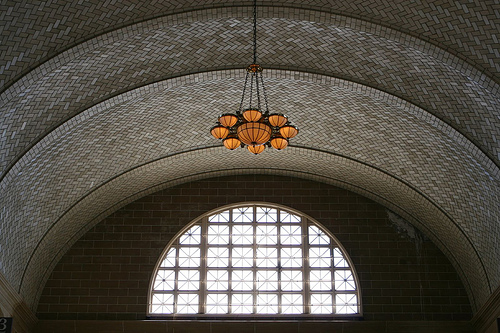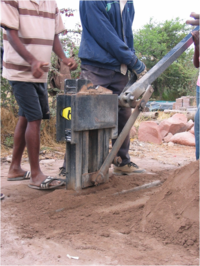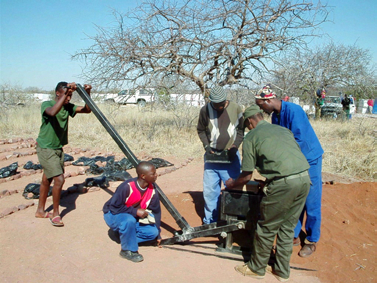CEB Vaults
Basics
(hat tip: Abe Connally) Brick, stone and concrete are materials strong in compression but weak in tension. Nowadays, this problem is solved by steel structures or the use of steel-reinforced concrete (the tensile strength of steel is significantly more than that of bricks, stone or plain concrete). Pre World War II, the weak tensile strength of brick was compensated for by superior craftsmanship. The timbrel vault technique was cheap, fast, ecological and durable. These structures are similar in appearance to ferrocement but rely on entirely different materials and technique. Basically, a vault is built using tiles, and this requires very little formwork. The tiles then become the form for the roof. This technique was brought to the United States by the Guastavino family from Catalonia. In the OSE context, the tiles could be produced by a machine like the Liberator. There is at present very little experience with using compressed earth tiles ("CETs"?) in Guastavino-type masonry. The question is whether CETs will deliver adequate structural performance, similar to fired tiles. This should be addressed by performing side-by-side comparisons of fired tiles vs. compressed earth tiles.
Mapungubwe National Park Interpretive Centre, South Africa
One example where tiles of compressed earth were used is the Mapungubwe National Park Interpretive Centre in South Africa. This architectural marvel won the Holcim Awards in 2008. It was featured at No Tech Magazine. Many technical details about the construction process can be found in File:ATDF-Journal-2010-Issue1,2-Architecture-October2010.pdf. Page 18 of the manual shows photos of tile production for that project:
Internal Links
External Links
- The Wikipedia Page on Architechtural Vaults
- highly recommended: Tiles as a substitute for steel: the art of the timbrel vault (Low-Tech Magazine)
- http://en.wikipedia.org/wiki/Guastavino_tile
- http://www.guastavino.net/
- http://crossway.tumblr.com/
- book by John Ochsendorf (MIT): "Guastavino Vaulting: The Art of Structural Tile[1]"
- An alternative option to pressed tiles would be to use geopolymer tiles, which would require a relatively low (~450°C) kiln temperature and may have structural properties similar to regular fired tiles.
- When building larger communities, the possibility of building standardized components should be considered, such as ceilings and window frames. These can be mass-produced and then transported to the construction site. This would bring down cost and increase workplace safety.


